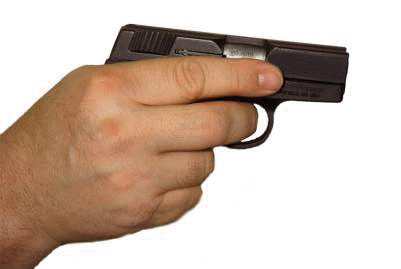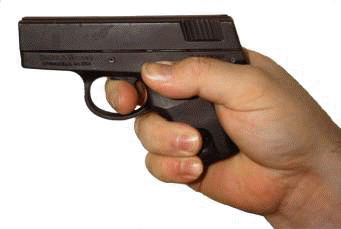

The
"Vermont Technique"
A
“Solution” Of More Concern Than The Problem By A “pessimist” has been described as one who sees things as they are, rather than how he’d like them to be. For better or for worse, this article might well serve to broadly define me as a pessimist. But, before I begin to elaborate in detail my pessimism for someone’s regurgitation of an old idea, let me inject some cause for optimism. In my 16 years as a police trainer, I’ve never witnessed use-of-force trainers as compelled to apply creativity and ingenuity to solve nagging, residual problems as they are today. This is a far cry from the complacency that I recall from most police trainers 20 years ago. Yes, many trainers are now commonly thinking "out of the box" about recurring problems that their officers experience. This is a quantum leap forward. If there is a downside, it could be that we've lost some of the skepticism of our training forefathers, while in pursuit of progressive training techniques.
One case in point that has received scattered attention in recent months is the
so-called "Vermont Technique." Promoted widely in gun magazines and
across the Internet, it is a technique being touted somewhat as a shooter’s
panacea. Yes, a panacea for problems ranging from being digitally impaired (as
with a finger amputation) to accommodating smaller pocket-type semi-automatic
pistols, even to enhancing the way the pistol points. This technique apparently isn’t as new as it’s current crop of promoters would have you believe it is, as I’ve received numerous pieces of correspondence from people attributing this technique to entities ranging from the Polish Cavalry, to the Mob. One person attributing this technique to the Mob provided me with an old photo of Jack Ruby’s assassination of Lee Harvey Oswald, who does appear to be using this technique in a virtual contact shooting of Oswald. Like many "solutions" that involve technical compromise, the Vermont Technique (VT-T) embodies some concessions that might well relegate this concept to Al Gore's "risky scheme" bin.
Look at the corresponding illustration and then ask yourself how your trainee will keep his/her trigger finger (in this case, the middle-finger) off the trigger, and out of the trigger-guard? The only answer one could hope for is that anyone employing this technique would be vigilant enough to keep his\her middle-finger braced against the forward side of the trigger-guard. But, one must first hope that their middle-finger is long enough to achieve contact (with sufficient purchase) of the forward side of the trigger-guard. Otherwise, that alternative trigger-finger (i.e. middle finger) will now rest, precariously, inside of the trigger-guard. That's right, it would seem that all of your endless admonitions to trainees about "never commit your finger to the trigger unless committed to firing a shot" have been compromised when employing this technique. It's that painfully simple! What we don't need are more ambiguous signals to trainees regarding anything that might impinge upon firearms safety. And yet, there are other problems with this technique. As a general rule, when we compromise, we want to get something better in return for that which we've given up. Right? That's not even remotely true with this technique. The "pinky" finger is the digit that offers the least in terms of grip strength, and grip purchase. That should be painfully obvious to anyone advocating this technique. And yet, by using the middle-finger as your trigger-finger, you've just sacrificed one of your most capable digits (the middle-finger) for one of your least capable digits (the pinky). In effect, you would now only be gripping the pistol with your thumb, index, and pinky fingers. By relegating the index-finger to being a permanent fixture along the frame, you've almost entirely removed this digit from the gripping equation. You should be considering the myriad of handgun retention implications here as well. (see Illustration B)
Proponents of this technique argue that by having the index finger of the strong hand positioned in this manner, you've enhanced weapon point-ability. As the index-finger remains outstretched, it, in effect, points towards a potential target. I would argue that contemporary pistol designs point quite well without having to make the extreme sacrifice of losing efficient function of one's index-finger. So, when could one actually make a justifiable case for this troubled technique? I can only foresee one viable application for the VT-T. That being when the index finger of the strong hand has been disabled during a confrontation, and, for whatever reason, the officer elects not to shift the handgun to his/her support hand. Would I advocate teaching a person who is missing a digit to use this technique? Only under two circumstances would I consider employing this technique.
In
summary, I would inject an observation many of us have had reinforced over the
years; strive to keep an open mind, but never stop questioning ideas that
involve questionable compromise. ©2004 The Police Policy Studies Council. All rights reserved.
|
 Illustration
A
Illustration
A  Illustration B
Illustration B